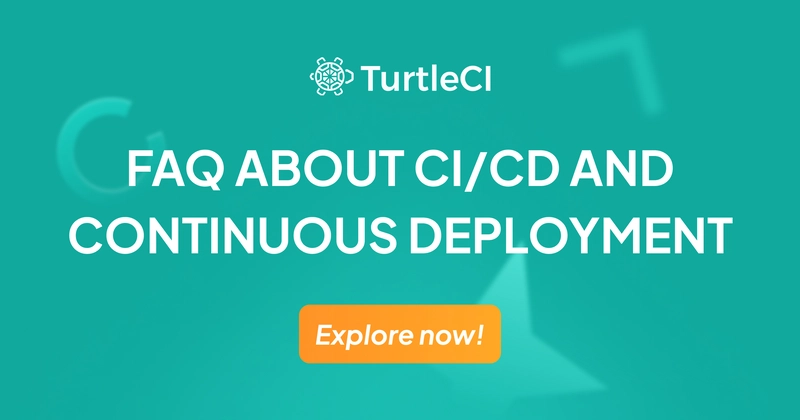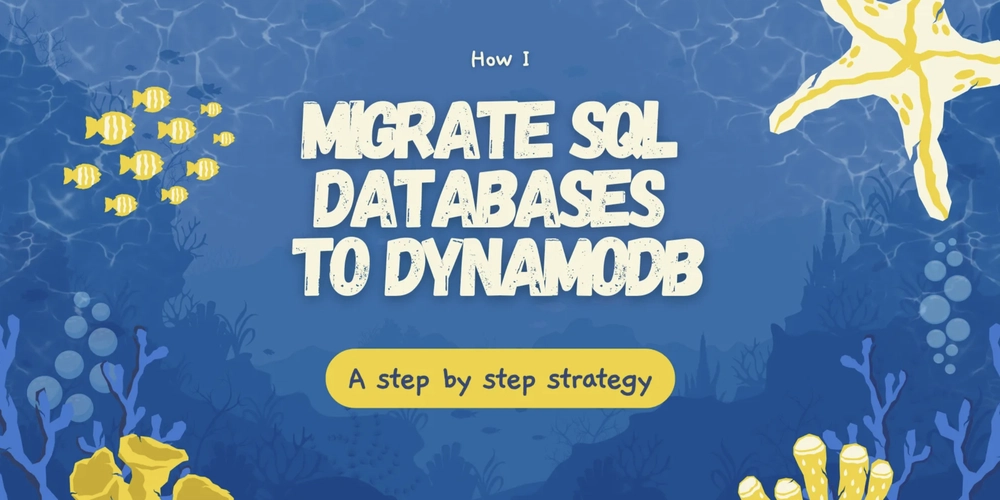Understand Continuous Integration, Delivery and Deployment
“CI/CD” is one of the most overused and misunderstood terms in modern software development. You’ll often hear developers, managers, and even vendors throw around phrases like “we do CI/CD” — but when asked to explain the difference between Continuous Integration and Continuous Delivery versus Continuous Integration and Continuous Deployment, the answers vary wildly. And that confusion is a problem. If your team doesn’t understand what each phase truly means, you may: Misapply tools Over-engineer pipelines Or worse, delay releases unnecessarily. This article will clarify each concept, compare their differences, and then explore how they combine into a powerful CI/CD platform — especially for developers and DevOps teams who want a practical, cost-effective, and scalable solution. Understand Continuous Integration Continuous Integration (CI) is the practice of automatically integrating code changes from multiple developers into a shared repository multiple times a day. Each integration is then verified by an automated build and test suite. From a business management perspective, CI addresses operational inefficiencies that often go unnoticed until they escalate into major delivery delays. By automating integration, it reduces dependency risks between developers and eliminates long feedback loops that can cost both time and money. The core benefits of CI: Faster feedback loops: Code is tested within minutes of being pushed, allowing managers to track development velocity and reduce idle engineering time. Reduced bugs in production: Early detection of issues through automated testing lowers defect escape rates, reducing rework and unplanned downtime. Improved team productivity: Developers can work independently without creating integration bottlenecks, freeing up engineering leadership to focus on strategic initiatives instead of firefighting technical debt. According to Google Cloud’s 2023 State of DevOps Report, high-performing teams using CI are 46x more likely to deploy code frequently and have 5x fewer failures in production. CI isn’t just a “nice to have” — it’s a prerequisite for reliable delivery at scale. Difference Between Continuous Integration and Continuous Delivery It’s common to hear CI and CD mentioned together, but Continuous Delivery (CD) builds on CI with one major extension: the ability to release code to production at any time. In Continuous Delivery: Every code change that passes the CI pipeline is automatically staged for release. Manual approval is still required before deploying to production. Key distinction: CI ensures your code works. CD ensures your product is always ready to ship. This is crucial for teams that need fast iteration without full automation. Continuous Delivery enables reliable releases with human oversight. Difference Between Continuous Integration and Continuous Deployment Now that we’ve clarified Continuous Delivery, it’s time to explore how Continuous Integration compares to Continuous Deployment — a relationship that’s often misunderstood but fundamentally important. Continuous Deployment, often confused with Continuous Delivery, is a more advanced stage in the CI/CD pipeline. It removes the manual approval step entirely and fully automates the release process. This means that once the code is committed and passes all automated tests, it goes straight to production without intervention. So, how does this differ from Continuous Integration? While Continuous Integration ensures that code is regularly merged and validated through automated builds and tests, Continuous Deployment takes it further by ensuring that those validated changes are not just “shippable” — they are shipped. In Continuous Deployment: Code that passes all tests is automatically deployed to production. There is no staging barrier or human gatekeeping. The real difference: Continuous Integration = Code validated frequently through builds and tests Continuous Deployment = Validated code deployed automatically to production This approach works well for high-trust environments and mature DevOps pipelines. However, it also requires confidence in your test coverage, rollback strategy, and observability tools — elements that leadership and engineering managers must align on before making the leap. CI/CD Platform — Combining Integration, Delivery & Deployment In modern development, the distinction between CI, CD, and CDp (deployment) blurs. This isn’t just a matter of terminology — it reflects a strategic shift in how engineering teams deliver value to the business. As software delivery becomes increasingly automated, interconnected, and responsive to customer feedback, separating these concepts too rigidly can create silos and inefficiencies. Teams today are expected to build, test, and deploy rapidly and reliably, often within the same workflow. That’s why adopting a unified CI/CD mindset and toolchain isn’t ju

“CI/CD” is one of the most overused and misunderstood terms in modern software development.
You’ll often hear developers, managers, and even vendors throw around phrases like “we do CI/CD” — but when asked to explain the difference between Continuous Integration and Continuous Delivery versus Continuous Integration and Continuous Deployment, the answers vary wildly. And that confusion is a problem.
If your team doesn’t understand what each phase truly means, you may:
- Misapply tools
- Over-engineer pipelines
- Or worse, delay releases unnecessarily.
This article will clarify each concept, compare their differences, and then explore how they combine into a powerful CI/CD platform — especially for developers and DevOps teams who want a practical, cost-effective, and scalable solution.
Understand Continuous Integration
Continuous Integration (CI) is the practice of automatically integrating code changes from multiple developers into a shared repository multiple times a day. Each integration is then verified by an automated build and test suite.
From a business management perspective, CI addresses operational inefficiencies that often go unnoticed until they escalate into major delivery delays. By automating integration, it reduces dependency risks between developers and eliminates long feedback loops that can cost both time and money.
The core benefits of CI:
- Faster feedback loops: Code is tested within minutes of being pushed, allowing managers to track development velocity and reduce idle engineering time.
- Reduced bugs in production: Early detection of issues through automated testing lowers defect escape rates, reducing rework and unplanned downtime.
- Improved team productivity: Developers can work independently without creating integration bottlenecks, freeing up engineering leadership to focus on strategic initiatives instead of firefighting technical debt.
According to Google Cloud’s 2023 State of DevOps Report, high-performing teams using CI are 46x more likely to deploy code frequently and have 5x fewer failures in production.
CI isn’t just a “nice to have” — it’s a prerequisite for reliable delivery at scale.
Difference Between Continuous Integration and Continuous Delivery
It’s common to hear CI and CD mentioned together, but Continuous Delivery (CD) builds on CI with one major extension: the ability to release code to production at any time.
In Continuous Delivery:
- Every code change that passes the CI pipeline is automatically staged for release.
- Manual approval is still required before deploying to production.
Key distinction:
- CI ensures your code works.
- CD ensures your product is always ready to ship.
This is crucial for teams that need fast iteration without full automation. Continuous Delivery enables reliable releases with human oversight.
Difference Between Continuous Integration and Continuous Deployment
Now that we’ve clarified Continuous Delivery, it’s time to explore how Continuous Integration compares to Continuous Deployment — a relationship that’s often misunderstood but fundamentally important.
Continuous Deployment, often confused with Continuous Delivery, is a more advanced stage in the CI/CD pipeline. It removes the manual approval step entirely and fully automates the release process. This means that once the code is committed and passes all automated tests, it goes straight to production without intervention.
So, how does this differ from Continuous Integration?
While Continuous Integration ensures that code is regularly merged and validated through automated builds and tests, Continuous Deployment takes it further by ensuring that those validated changes are not just “shippable” — they are shipped.
In Continuous Deployment:
- Code that passes all tests is automatically deployed to production.
- There is no staging barrier or human gatekeeping.
The real difference:
- Continuous Integration = Code validated frequently through builds and tests
- Continuous Deployment = Validated code deployed automatically to production
This approach works well for high-trust environments and mature DevOps pipelines. However, it also requires confidence in your test coverage, rollback strategy, and observability tools — elements that leadership and engineering managers must align on before making the leap.
CI/CD Platform — Combining Integration, Delivery & Deployment
In modern development, the distinction between CI, CD, and CDp (deployment) blurs. This isn’t just a matter of terminology — it reflects a strategic shift in how engineering teams deliver value to the business. As software delivery becomes increasingly automated, interconnected, and responsive to customer feedback, separating these concepts too rigidly can create silos and inefficiencies. Teams today are expected to build, test, and deploy rapidly and reliably, often within the same workflow. That’s why adopting a unified CI/CD mindset and toolchain isn’t just beneficial — it’s become necessary. The most effective teams implement all three through a CI/CD platform.
A CI/CD platform is a unified toolchain that automates:
- Code integration (CI)
- Testing & staging (CD)
- Production release (CDp)
Why this matters:
- You don’t want three separate tools for three processes.
- You want consistency, observability, and performance across all stages.
Benefits of a CI/CD Platform for Developer Experience
A seamless CI/CD platform doesn’t just accelerate software delivery. It transforms the developer experience (DX):
- Confidence in changes: Fast feedback loops mean fewer surprises.
- Fewer context switches: One integrated interface means less tooling overhead.
- Increased autonomy: Developers own their releases, reducing bottlenecks.
McKinsey’s 2023 Developer Velocity Index reported that organizations with high DX scores are 4x more likely to outperform competitors in revenue growth (McKinsey, 2023).
Explore the Best Cost-Effective CI/CD Platform for DevOps and Developers here!









































































































































































![[The AI Show Episode 144]: ChatGPT’s New Memory, Shopify CEO’s Leaked “AI First” Memo, Google Cloud Next Releases, o3 and o4-mini Coming Soon & Llama 4’s Rocky Launch](https://www.marketingaiinstitute.com/hubfs/ep%20144%20cover.png)




























































































































![[DEALS] The All-in-One Microsoft Office Pro 2019 for Windows: Lifetime License + Windows 11 Pro Bundle (89% off) & Other Deals Up To 98% Off](https://www.javacodegeeks.com/wp-content/uploads/2012/12/jcg-logo.jpg)



























![Is this too much for a modular monolith system? [closed]](https://i.sstatic.net/pYL1nsfg.png)






















































































































_Andreas_Prott_Alamy.jpg?width=1280&auto=webp&quality=80&disable=upscale#)
































































































![What features do you get with Gemini Advanced? [April 2025]](https://i0.wp.com/9to5google.com/wp-content/uploads/sites/4/2024/02/gemini-advanced-cover.jpg?resize=1200%2C628&quality=82&strip=all&ssl=1)













![Apple Shares Official Trailer for 'Long Way Home' Starring Ewan McGregor and Charley Boorman [Video]](https://www.iclarified.com/images/news/97069/97069/97069-640.jpg)
![Apple Watch Series 10 Back On Sale for $299! [Lowest Price Ever]](https://www.iclarified.com/images/news/96657/96657/96657-640.jpg)
![EU Postpones Apple App Store Fines Amid Tariff Negotiations [Report]](https://www.iclarified.com/images/news/97068/97068/97068-640.jpg)
![Apple Slips to Fifth in China's Smartphone Market with 9% Decline [Report]](https://www.iclarified.com/images/news/97065/97065/97065-640.jpg)





































































































































